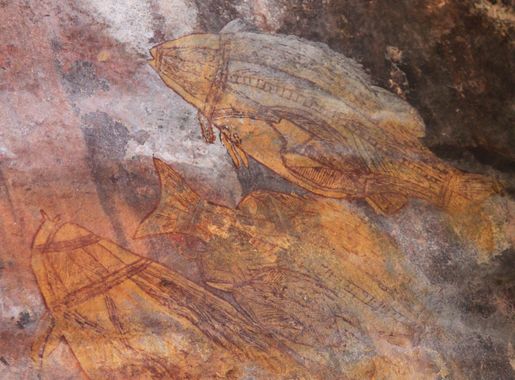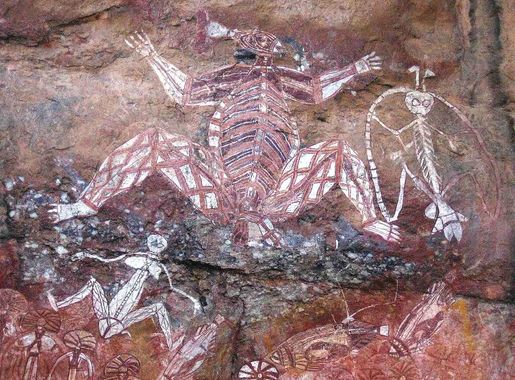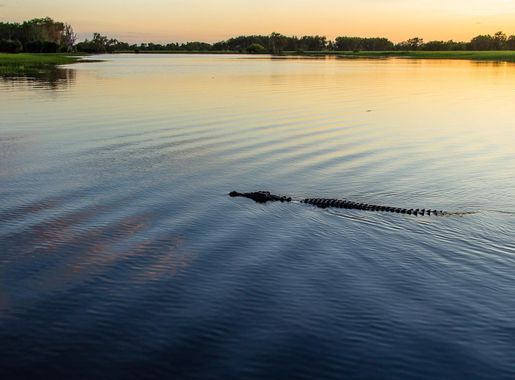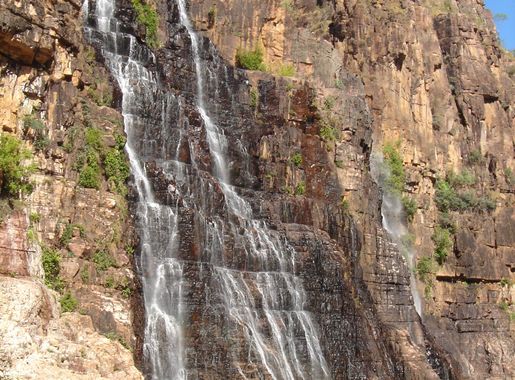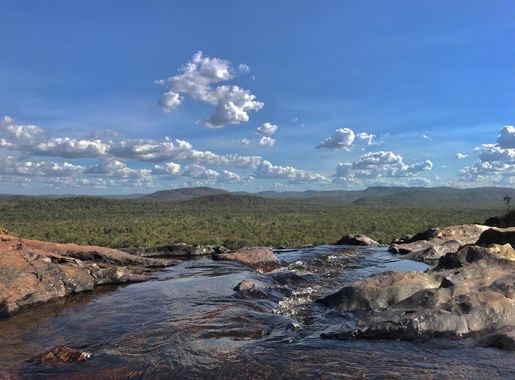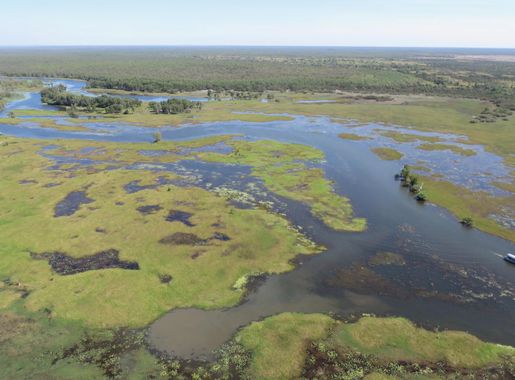
Kakadu National Park: Australia's Natural Wonderland
Explore the breathtaking landscapes, ancient rock art, and diverse wildlife of Kakadu National Park, a UNESCO World Heritage site in Australia's Northern Territory.
Kakadu National Park, located in Australia's Northern Territory, is a UNESCO World Heritage site renowned for its stunning landscapes, rich Aboriginal culture, and diverse wildlife. Spanning nearly 20,000 square kilometers, the park is home to wetlands, rivers, and ancient rock formations that tell the story of 50,000 years of human history. Visitors can explore ancient rock art galleries, some of which date back over 20,000 years, offering a unique glimpse into the lives and beliefs of the Indigenous people who have inhabited the area for millennia. The park's diverse ecosystems are a haven for wildlife enthusiasts. Birdwatchers can delight in spotting over 280 species of birds, while those with a keen eye might catch sight of the elusive saltwater crocodile sunbathing along the banks of the park's many waterways. The landscapes are equally varied, from the lush greenery of the monsoon forests to the expansive floodplains and escarpments that provide breathtaking panoramic views. Kakadu is also a place of adventure and discovery. Visitors can take part in guided tours, boat cruises, and bushwalks that reveal the park's hidden gems. For the more adventurous, there are opportunities for fishing, swimming in natural pools, and even camping under the stars. With its incredible natural beauty and profound cultural significance, Kakadu National Park offers a truly unforgettable experience for all who visit.
Local tips in Kakadu National Park
- Visit during the dry season (May to October) for easier access to most attractions and better weather conditions.
- Hire a local guide to fully appreciate the cultural and historical significance of the rock art sites.
- Bring insect repellent and sunscreen, as the tropical environment can be harsh.
- Stay hydrated and carry plenty of water, especially if you plan to hike or engage in outdoor activities.
- Respect the local Indigenous culture and follow guidelines when visiting sacred sites.
Kakadu National Park: Australia's Natural Wonderland
Kakadu National Park, located in Australia's Northern Territory, is a UNESCO World Heritage site renowned for its stunning landscapes, rich Aboriginal culture, and diverse wildlife. Spanning nearly 20,000 square kilometers, the park is home to wetlands, rivers, and ancient rock formations that tell the story of 50,000 years of human history. Visitors can explore ancient rock art galleries, some of which date back over 20,000 years, offering a unique glimpse into the lives and beliefs of the Indigenous people who have inhabited the area for millennia. The park's diverse ecosystems are a haven for wildlife enthusiasts. Birdwatchers can delight in spotting over 280 species of birds, while those with a keen eye might catch sight of the elusive saltwater crocodile sunbathing along the banks of the park's many waterways. The landscapes are equally varied, from the lush greenery of the monsoon forests to the expansive floodplains and escarpments that provide breathtaking panoramic views. Kakadu is also a place of adventure and discovery. Visitors can take part in guided tours, boat cruises, and bushwalks that reveal the park's hidden gems. For the more adventurous, there are opportunities for fishing, swimming in natural pools, and even camping under the stars. With its incredible natural beauty and profound cultural significance, Kakadu National Park offers a truly unforgettable experience for all who visit.
When is the best time to go to Kakadu National Park?
Unmissable attractions to see
Cahills Crossing
Discover the breathtaking wildlife and scenic beauty at Cahills Crossing in Kakadu National Park, a true gem for nature lovers.
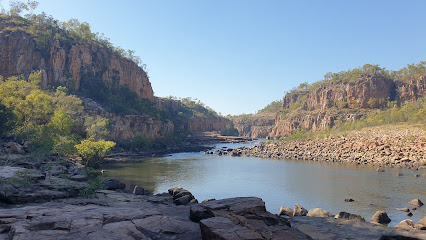
Bowali Visitor Centre
Explore the rich natural and cultural heritage of Kakadu at the Bowali Visitor Centre, your gateway to adventure in Australia's iconic national park.
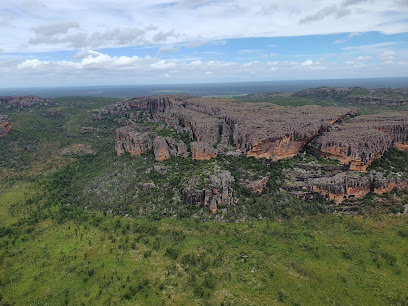
Nadab Lookout
Experience the stunning wetlands of Kakadu National Park from the breathtaking heights of Nadab Lookout, a must-visit observation deck in Australia.

Anbangbang Rock Shelter
Explore the ancient rock art and rich cultural heritage at Anbangbang Rock Shelter in Kakadu National Park, a must-visit destination for every traveler.
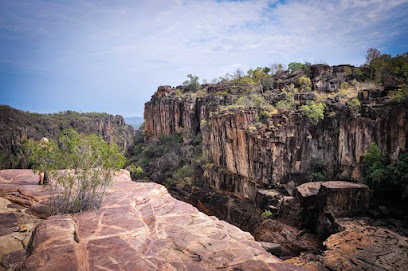
Ubirr Art Site
Discover the Ubirr Art Site—an ancient Aboriginal rock art treasure in Kakadu National Park, rich in cultural heritage and stunning views.

Ubirr (Rock Art)
Explore Ubirr, an iconic site of ancient Aboriginal rock art and breathtaking views in Kakadu National Park, Northern Territory, Australia.
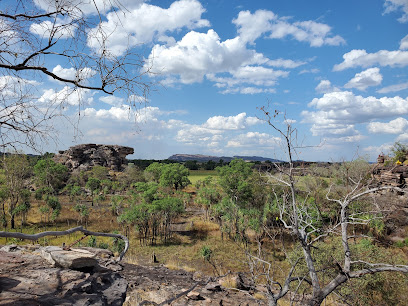
Nawurlandja Lookout
Experience breathtaking views and cultural insights at Nawurlandja Lookout in Kakadu National Park, a must-visit for nature lovers and adventurers.

Gunlom Waterfall Creek
Discover the enchanting Gunlom Waterfall Creek in Kakadu National Park, a paradise for nature lovers and adventure seekers in Australia's Northern Territory.
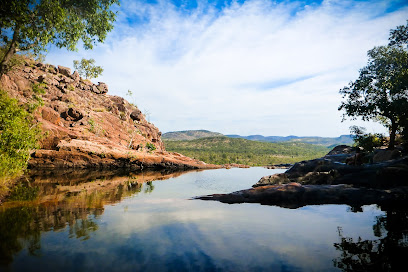
Mamukala Wetlands
Explore the breathtaking Mamukala Wetlands in Kakadu National Park, a serene haven for birdwatchers and nature lovers alike.
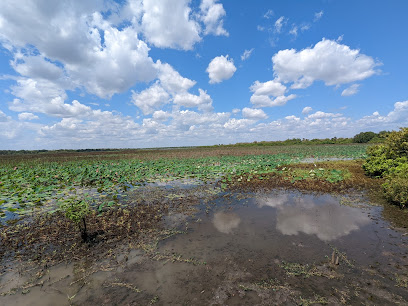
Jabiru Lake
Experience the beauty and tranquility of Jabiru Lake, a natural park perfect for nature lovers and outdoor enthusiasts in the heart of Australia's Northern Territory.
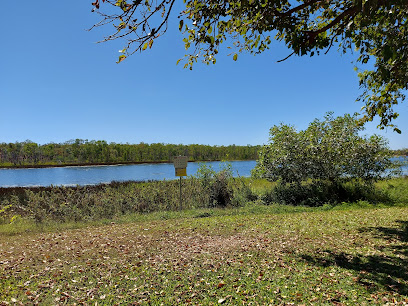
Mirray Lookout
Discover the stunning vistas and wildlife at Mirray Lookout in Kakadu National Park, a must-see destination for nature lovers and photographers.
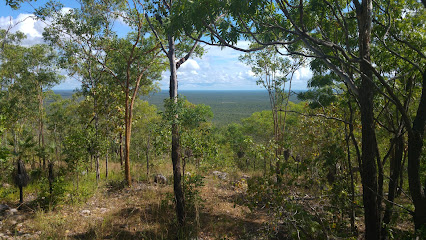
South Alligator River
Explore the breathtaking South Alligator River, a natural gem in Kakadu National Park known for its diverse wildlife and rich Aboriginal culture.
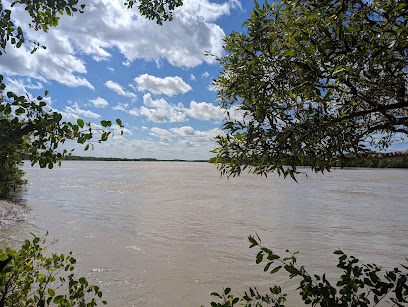
Nanguluwurr Art Site
Explore the ancient rock art of Nanguluwurr Art Site in Kakadu National Park, a testament to Australia's rich Indigenous culture and history.

Jim Jim Falls
Explore the stunning Jim Jim Falls in Kakadu National Park, a breathtaking waterfall offering adventure and natural beauty in Australia's Northern Territory.

Motor Car Falls
Experience the breathtaking beauty of Motor Car Falls, a stunning natural wonder in Kakadu National Park, perfect for adventure seekers and nature lovers alike.
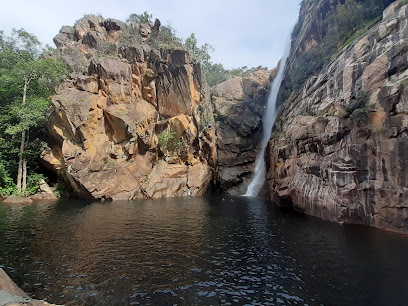
Essential places to dine
Kakadu National Park
Explore Kakadu National Park: A UNESCO World Heritage site with stunning landscapes, rich culture, and diverse wildlife waiting to be discovered.

Cooinda Lodge Kakadu
Discover the beauty of Kakadu National Park at Cooinda Lodge – your gateway to adventure and nature's wonders in Australia.
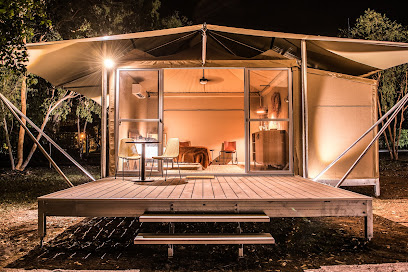
Mercure Kakadu Crocodile Hotel
Discover comfort and adventure at Mercure Kakadu Crocodile Hotel, your perfect base for exploring Kakadu National Park's natural wonders.

Mimi's Restaurant & Barra Bar
Experience authentic Australian cuisine at Mimi's Restaurant & Barra Bar amidst the breathtaking landscapes of Kakadu National Park.

Corroboree Park Tavern
Discover comfort and adventure at Corroboree Park Tavern – your perfect retreat in Australia's stunning Northern Territory.
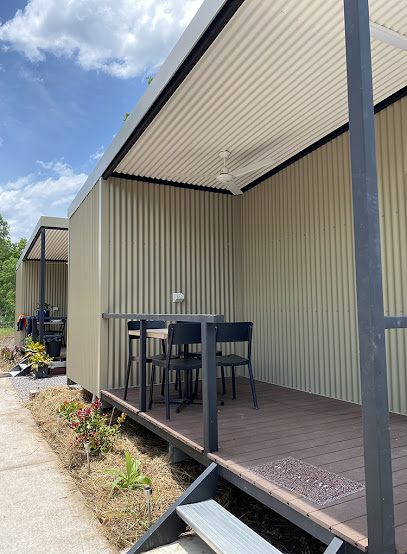
Bowali Visitor Centre
Explore Australia's wilderness at Bowali Visitor Centre—your starting point for adventure in Kakadu National Park.
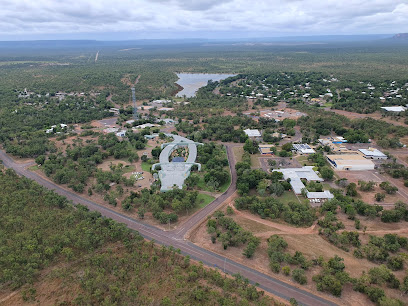
Aurora Kakadu Lodge & Caravan Park
Experience nature's wonders at Aurora Kakadu Lodge & Caravan Park – your gateway to unforgettable adventures in Kakadu National Park.
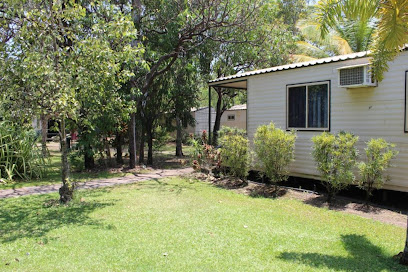
Anbinik Kakadu Resort
Discover comfort amidst nature at Anbinik Kakadu Resort – your gateway to exploring Australia's breathtaking Kakadu National Park.

Anbangbang Rock Shelter
Explore Anbangbang Rock Shelter: A captivating journey through ancient Aboriginal art and stunning natural beauty in Kakadu National Park.
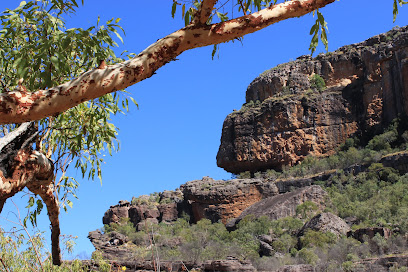
Ubirr (Rock Art)
Explore Ubirr Rock Art: A UNESCO World Heritage Site Showcasing Ancient Aboriginal Culture in Stunning Kakadu National Park.

Barramundi Gorge (Maguk) Waterfall
Explore Barramundi Gorge (Maguk) Waterfall: A breathtaking oasis in Kakadu National Park with stunning views and serene swimming spots.

Kakadu Supermarket
Explore local flavors at Kakadu Supermarket in Jabiru - your one-stop shop for authentic Australian produce and unique culinary experiences.

Village Grocer Kakadu
Discover local flavors at Village Grocer Kakadu in Jabiru - your one-stop shop for fresh produce and regional specialties.

Warradjan Aboriginal Cultural Centre
Explore Aboriginal culture at Warradjan Cultural Centre - art, stories & heritage in stunning Kakadu National Park.

Nawurlandja Lookout
Experience breathtaking views at Nawurlandja Lookout in Kakadu National Park, where nature meets culture in an unforgettable landscape.
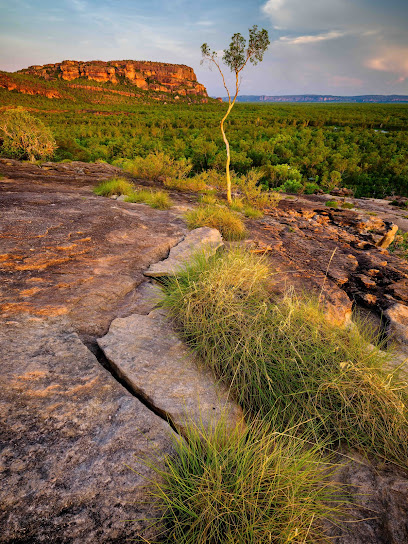
Markets, malls and hidden boutiques
Kakadu National Park
Discover Kakadu National Park: A UNESCO World Heritage site showcasing breathtaking landscapes, diverse wildlife, and rich Aboriginal culture.
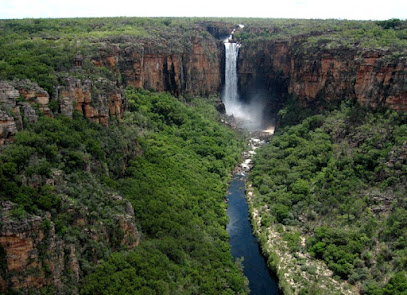
Cooinda Lodge Kakadu
Discover the natural wonders of Kakadu National Park while enjoying the comfort and hospitality of Cooinda Lodge, your ideal retreat in the Australian outback.

Mercure Kakadu Crocodile Hotel
Discover comfort and adventure at Mercure Kakadu Crocodile Hotel, your gateway to the stunning Kakadu National Park.

Mimi's Restaurant & Barra Bar
Experience the flavors of Kakadu at Mimi's Restaurant & Barra Bar, where local cuisine meets Aboriginal culture in a stunning setting.
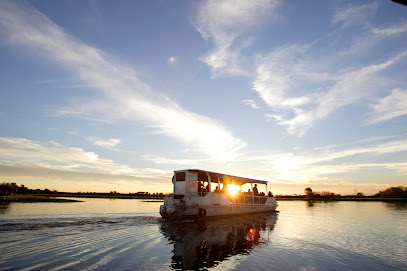
Bowali Visitor Centre
Explore Kakadu National Park from the Bowali Visitor Centre, your ultimate resource for nature, culture, and adventure in Australia.
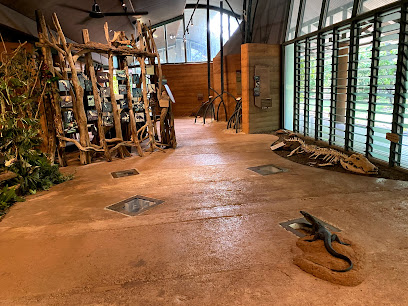
Anbinik Kakadu Resort
Experience the beauty and adventure of Kakadu National Park at Anbinik Kakadu Resort, your serene escape in Australia’s Northern Territory.

Anbangbang Rock Shelter
Discover the ancient rock art and rich cultural heritage at Anbangbang Rock Shelter in Kakadu National Park, a UNESCO World Heritage site.
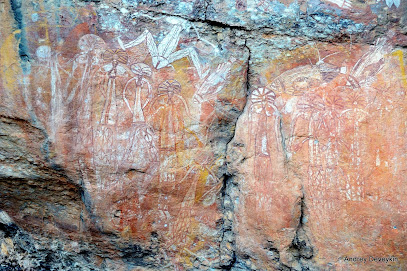
Barramundi Gorge (Maguk) Waterfall
Experience the breathtaking beauty of Barramundi Gorge Waterfall in Kakadu National Park, a natural wonder perfect for swimming, hiking, and wildlife spotting.
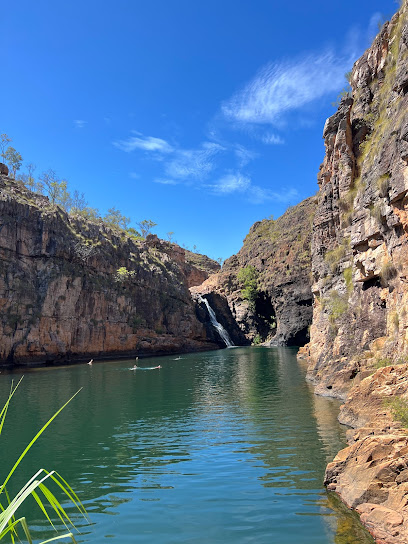
Kakadu Air Services
Experience the breathtaking beauty of Kakadu National Park from the air with Kakadu Air Services – a unique aerial adventure awaits.
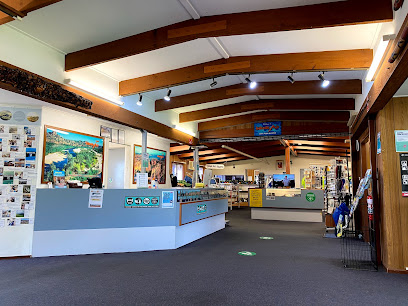
Village Grocer Kakadu
Discover local flavors and essentials at Village Grocer Kakadu, the gateway to your Kakadu adventure in Jabiru.

Marrawuddi Arts & Culture
Explore authentic Aboriginal artistry and enjoy delightful coffee at Marrawuddi Arts & Culture in Jabiru, Northern Territory.
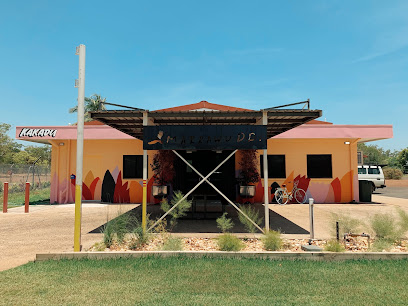
Warradjan Aboriginal Cultural Centre
Discover the heart of Aboriginal culture at the Warradjan Aboriginal Cultural Centre in Kakadu National Park, a hub of artistic expression and heritage.
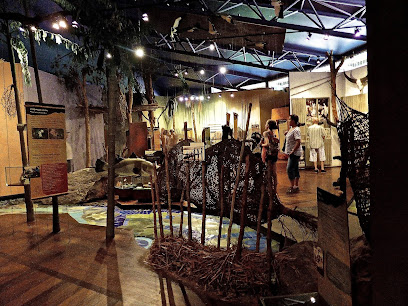
Nawurlandja Lookout
Experience the stunning panoramic views of Kakadu National Park at Nawurlandja Lookout, a must-visit destination for nature lovers and photographers.
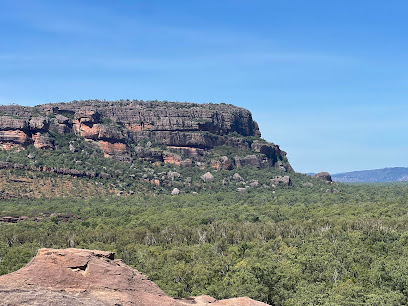
Kakadu Tours and Travel
Discover the breathtaking beauty and rich heritage of Kakadu National Park with expert-guided tours from Kakadu Tours and Travel.
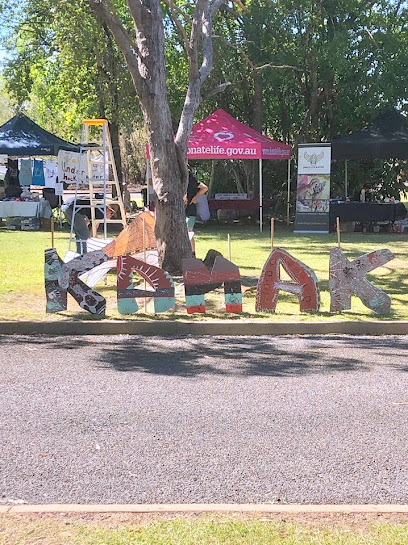
Mamukala Wetlands
Explore Mamukala Wetlands: A Stunning Natural Sanctuary in Kakadu National Park, Perfect for Birdwatching and Scenic Walks.
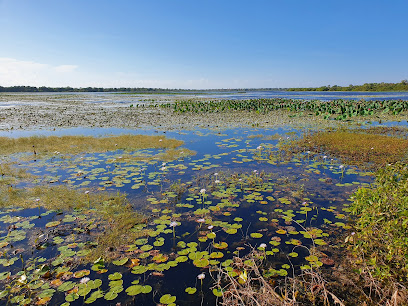
Essential bars & hidden hideouts
Daly Waters Pub
Discover the historic Daly Waters Pub, an iconic destination in Australia's Northern Territory, where culture, flavors, and camaraderie blend seamlessly.
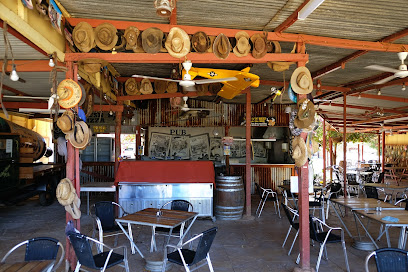
Humpty Doo Hotel
Discover the Humpty Doo Hotel, where Australian outback charm meets delicious dining and vibrant nightlife amidst beautiful Northern Territory scenery.
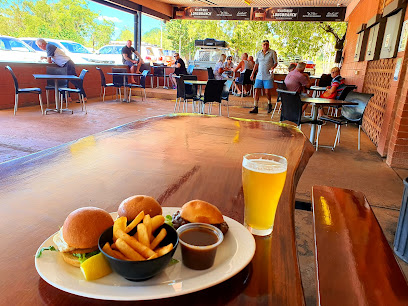
Lola's Pergola Darwin
Experience the vibrant atmosphere of Lola's Pergola in Darwin, where delicious pizzas and crafted cocktails meet stunning marina views.
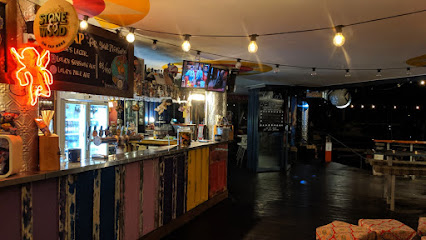
Cooinda Lodge Kakadu
Discover the beauty of Kakadu National Park while staying at Cooinda Lodge, your perfect eco-friendly escape in Australia.

Mercure Kakadu Crocodile Hotel
Discover the ultimate blend of comfort and adventure at Mercure Kakadu Crocodile Hotel, your gateway to Kakadu National Park.
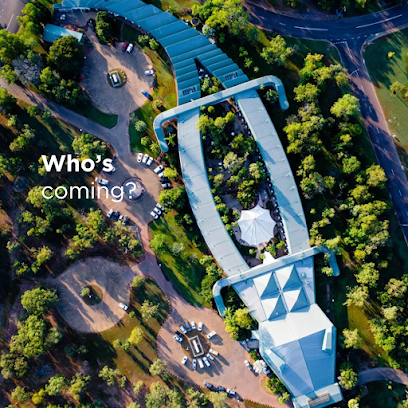
Mimi's Restaurant & Barra Bar
Discover the flavors of Kakadu at Mimi's Restaurant & Barra Bar, where local ingredients meet indigenous culture in a stunning natural setting.
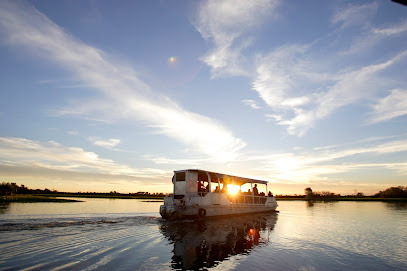
Corroboree Park Tavern
Discover the unique blend of comfort and adventure at Corroboree Park Tavern, your ideal base for exploring the Northern Territory's natural beauty.
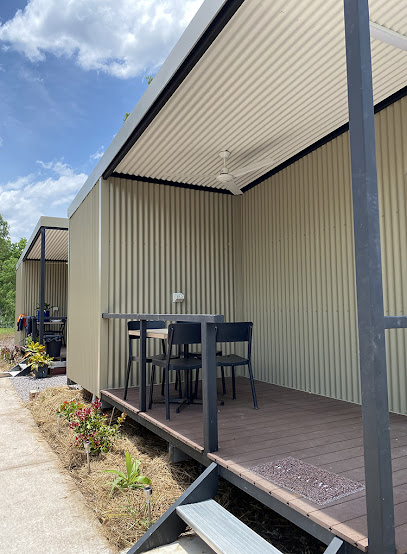
Noonamah Tavern
Discover Noonamah Tavern: A lively pub and restaurant offering delicious meals and a vibrant atmosphere in the heart of Northern Territory.

Darwin River Tavern
Experience authentic Australian ambiance at Darwin River Tavern, offering delicious food and drinks in the heart of Northern Territory's stunning landscapes.

Humpty Doo Tavern
Experience the vibrant atmosphere of Humpty Doo Tavern, a top spot for sports and bistro dining in Northern Territory.

Anbinik Kakadu Resort
Experience the tranquil beauty of Kakadu National Park at Anbinik Kakadu Resort, your gateway to adventure and relaxation in nature's paradise.

Barramundi Gorge (Maguk) Waterfall
Discover the breathtaking beauty of Barramundi Gorge (Maguk) Waterfall in Kakadu National Park – a scenic paradise for nature lovers and adventure seekers.
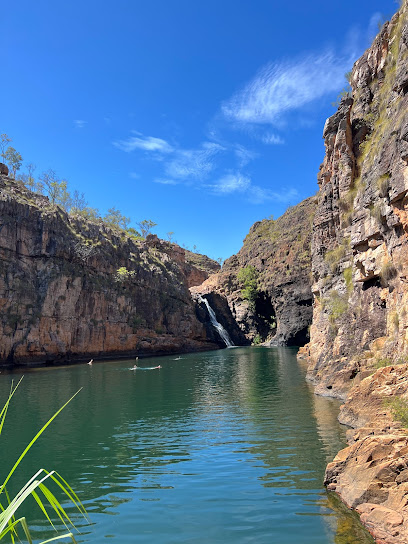
Nawurlandja Lookout
Discover the stunning vistas and rich Aboriginal heritage at Nawurlandja Lookout in Kakadu National Park.
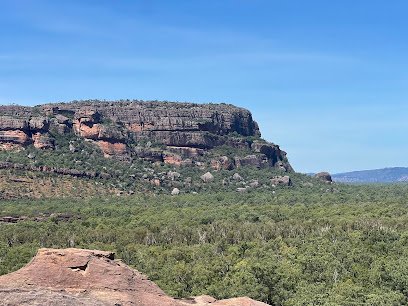
The Purple Mango Cafe and Brewery
Experience the delightful fusion of craft brews and gourmet pizzas at The Purple Mango Cafe and Brewery in Marrakai, Northern Territory.

303. BAR Adelaide River Inn
Discover the vibrant atmosphere of 303. BAR Adelaide River Inn, your perfect stop along the Stuart Highway for drinks and relaxation in the Northern Territory.
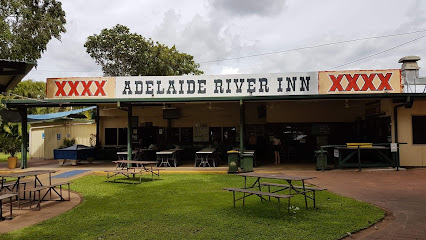
Local Phrases about Kakadu National Park
-
- HelloNgukkur
[ngoo-kurr] - GoodbyeNgalmamurr
[nga-lma-murr] - YesNyo
[nyo] - NoNgo
[ngo] - Please/You're welcomeNgarrkadurr
[ngar-ka-durr] - Thank youNgajak
[nga-jak] - Excuse me/SorryNgarrka
[ngar-ka] - How are you?Wenem ngalkun?
[we-nem ngal-kun] - Fine. And you?Ngawer. Ngalkun mani?
[nga-wer. ngal-kun ma-ni] - Do you speak English?Ngamun nginjman mani?
[nga-mun nginj-man ma-ni] - I don't understandNganmayin ngarrka
[nga-nma-yin ngar-ka]
- HelloNgukkur
-
- I'd like to see the menu, pleaseNgawer nganmayin ngarrka mani
[nga-wer nga-nma-yin ngar-ka ma-ni] - I don't eat meatNganmayin ngarrka ngo nganang mani
[nga-nma-yin ngar-ka ngo nga-nang ma-ni] - Cheers!Ngolok
[ngo-lok] - I would like to pay, pleaseNgawer nganmayin ngarrka mani
[nga-wer nga-nma-yin ngar-ka ma-ni]
- I'd like to see the menu, pleaseNgawer nganmayin ngarrka mani
-
- Help!Ngalung
[nga-lung] - Go away!Ngarrnang
[ngar-rnang] - Call the Police!Ngamun ngarrka dja yiman
[nga-mun ngar-ka ja yi-man] - Call a doctor!Ngamun ngarrka dja wuluk
[nga-mun ngar-ka ja wu-luk] - I'm lostNgawer nganmayin ngarrka mani
[nga-wer nga-nma-yin ngar-ka ma-ni] - I'm illNgawer nganmayin ngarrka mani
[nga-wer nga-nma-yin ngar-ka ma-ni]
- Help!Ngalung
-
- I'd like to buy...Ngawer nganmayin ngarrka mani...
[nga-wer nga-nma-yin ngar-ka ma-ni] - I'm just lookingNgawer ngarri ngarri mani
[nga-wer nga-rri nga-rri ma-ni] - How much is it?Ngamun ngarrka dja?
[nga-mun ngar-ka ja] - That's too expensiveNganjun ngarrka mani
[nga-njun ngar-ka ma-ni] - Can you lower the price?Ngamun ngarrka nganmayin mani?
[nga-mun ngar-ka nga-nma-yin ma-ni]
- I'd like to buy...Ngawer nganmayin ngarrka mani...
-
- What time is it?Ngamun ngarrka dja ngarrka?
[nga-mun ngar-ka ja ngar-ka] - It's one o'clockNgo ngarrka dja wanjh
[ngo ngar-ka ja wan-jh] - Half past (10)Nganmayin ngarrka yiman
[nga-nma-yin ngar-ka yi-man] - MorningWanjh
[wan-jh] - AfternoonNgarrka wanjh
[ngar-ka wan-jh] - EveningNganmayin wanjh
[nga-nma-yin wan-jh] - YesterdayNgandjul
[nga-ndjul] - TodayNgarrka
[ngar-ka] - TomorrowNgarrka mani
[ngar-ka ma-ni] - 1Wanjh
[wan-jh] - 2Yiman
[yi-man] - 3Ngarri
[nga-rri] - 4Wanjh yiman
[wan-jh yi-man] - 5Wanjh ngarri
[wan-jh nga-rri] - 6Ngo yiman
[ngo yi-man] - 7Ngo ngarri
[ngo nga-rri] - 8Ngo wanjh yiman
[ngo wan-jh yi-man] - 9Ngo wanjh ngarri
[ngo wan-jh nga-rri] - 10Nganmayin
[nga-nma-yin]
- What time is it?Ngamun ngarrka dja ngarrka?
-
- Where's a/the...?Ngamun ngarrka dja...
[nga-mun ngar-ka ja] - What's the address?Ngamun ngarrka dja ngarrka?
[nga-mun ngar-ka ja ngar-ka] - Can you show me (on the map)?Ngamun ngarrka nganmayin ngarrka mani?
[nga-mun ngar-ka nga-nma-yin ngar-ka ma-ni] - When's the next (bus)?Ngamun ngarrka dja yiman
[nga-mun ngar-ka ja yi-man] - A ticket (to ....)Nganmayin ngarrka yiman (dja ....)
[nga-nma-yin ngar-ka yi-man ja]
- Where's a/the...?Ngamun ngarrka dja...
History of Kakadu National Park
-
Kakadu National Park is home to one of the oldest cultures on Earth, with Aboriginal people having lived in the region for over 65,000 years. The park is rich in Aboriginal rock art, with thousands of sites scattered across its landscape. These artworks provide a fascinating glimpse into the spiritual and daily lives of the Bininj/Mungguy people, depicting everything from creation myths to hunting scenes.
-
The first recorded European contact with the Kakadu region occurred in the early 19th century. Explorer Ludwig Leichhardt traversed the area during his expedition from Moreton Bay to Port Essington in 1845. This initial contact eventually led to more European exploration and settlement, which significantly impacted the Indigenous communities living there.
-
In the early 20th century, the discovery of uranium and other minerals in Kakadu brought a wave of miners and prospectors to the region. The uranium mine at Ranger, for instance, has been a site of both economic activity and environmental controversy since its establishment. The mining era had a profound impact on the landscape and the lives of the local Aboriginal people.
-
Kakadu National Park was officially declared in 1979, marking the beginning of efforts to protect and preserve this unique environment. The park was established in several stages, with the final area being added in 1991. It was established through the collaborative efforts of the Australian government and the traditional owners, ensuring the protection of both the natural and cultural heritage of the region.
-
Kakadu National Park has the distinction of being listed as a UNESCO World Heritage Site for both its natural and cultural values. The park was first inscribed on the World Heritage List in 1981 for its outstanding natural beauty and biodiversity. In 1987, it was also recognized for its cultural significance, particularly its ancient rock art sites and the living culture of the Aboriginal people.
-
Today, Kakadu National Park is co-managed by Parks Australia and the traditional Aboriginal owners. This collaborative management model ensures that the cultural heritage and ecological integrity of the park are maintained. The Bininj/Mungguy people play a crucial role in decision-making processes, helping to guide the conservation and tourism activities within their ancestral lands.
Kakadu National Park Essentials
-
Kakadu National Park is located in the Northern Territory of Australia, approximately 171 kilometers southeast of Darwin. The most common way to get there is by flying into Darwin International Airport. From Darwin, you can rent a car and drive to Kakadu, which takes about 3 hours via the Arnhem Highway. There are also bus services and guided tours that operate from Darwin to Kakadu, offering a more relaxed means of travel.
-
Within Kakadu National Park, the best way to get around is by car. Renting a 4WD vehicle is highly recommended as it allows access to more remote areas of the park, especially during the wet season when some roads may be closed or difficult to navigate. There are also guided tours available that offer transportation and expert insights into the park's attractions. Cycling is another option for those who want to explore at a slower pace, but be prepared for the heat and carry plenty of water.
-
The official currency in Australia is the Australian Dollar (AUD). Credit and debit cards are widely accepted in Kakadu, particularly at larger establishments such as hotels, restaurants, and major tourist attractions. However, it is advisable to carry some cash for smaller purchases or in case you visit more remote areas where card facilities might not be available. ATMs can be found in major hubs like Jabiru.
-
Kakadu National Park is generally a safe destination, but visitors should take standard precautions. Be aware of your surroundings, especially in crowded areas. The park is vast and remote, so always inform someone of your travel plans. Avoid walking alone at night. There are no specific high-crime areas targeting tourists, but it is always best to stay vigilant and secure your belongings. Be cautious of wildlife, including crocodiles and snakes, and always follow safety signs and guidelines.
-
In case of an emergency, dial 000 for immediate assistance. The park has ranger stations and visitor centers equipped to handle various emergencies, including medical issues. It is highly recommended to have travel insurance that covers medical emergencies and evacuation. For minor health concerns, there are clinics in Jabiru and nearby towns where you can seek medical advice and purchase over-the-counter medications.
-
Fashion: Do wear lightweight, breathable clothing and sturdy shoes suitable for hiking. Always wear a hat and sunscreen. Religion: Do respect the Indigenous cultural heritage of the park. Some areas are sacred and may have restrictions. Public Transport: Do use authorized tour operators for guided tours. There are limited public transport options within the park. Greetings: Do greet people with a friendly 'Hello' or 'G'day.' Indigenous customs vary, so be respectful. Eating & Drinking: Do try local bush tucker tours to experience traditional Indigenous foods. Don't litter; always dispose of waste properly.
-
To experience Kakadu National Park like a local, visit during the dry season (May to October) when the weather is more favorable, and most attractions are accessible. Engage with local Indigenous guides for a deeper understanding of the park's cultural significance. Don't miss the sunset views at Ubirr and Nourlangie rock art sites. Participate in ranger-led activities that provide insights into the park's ecology and Indigenous heritage. For a unique experience, take a scenic flight over the park to appreciate its vast landscapes and natural beauty.
Nearby Cities to Kakadu National Park
-
Things To Do in Lospalos
-
Things To Do in Baucau
-
Things To Do in Same
-
Things To Do in Suai
-
Things To Do in Aileu
-
Things To Do in Bobonaro
-
Things To Do in Dili
-
Things To Do in Gleno
-
Things To Do in Ermera
-
Things To Do in Alice Springs
-
Things To Do in Port Douglas
-
Things To Do in Buka
-
Things To Do in Cairns
-
Things To Do in Vanimo
-
Things To Do in Mount Hagen


